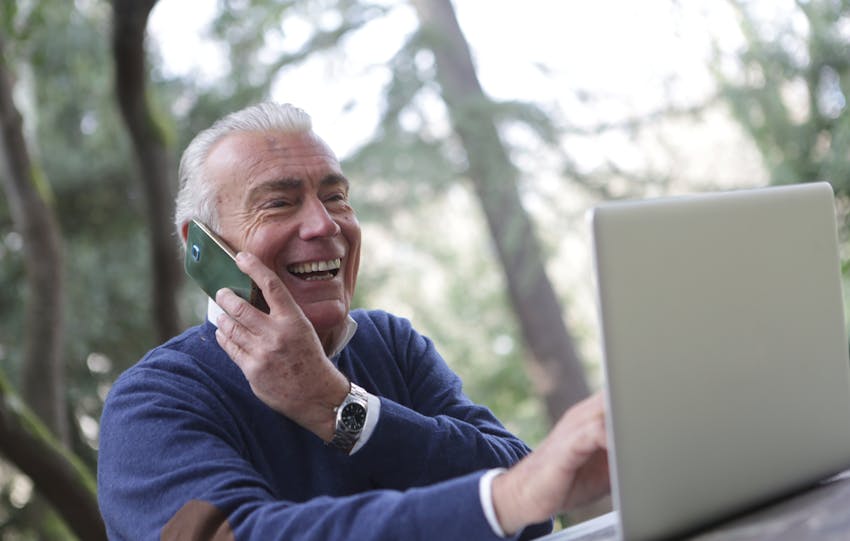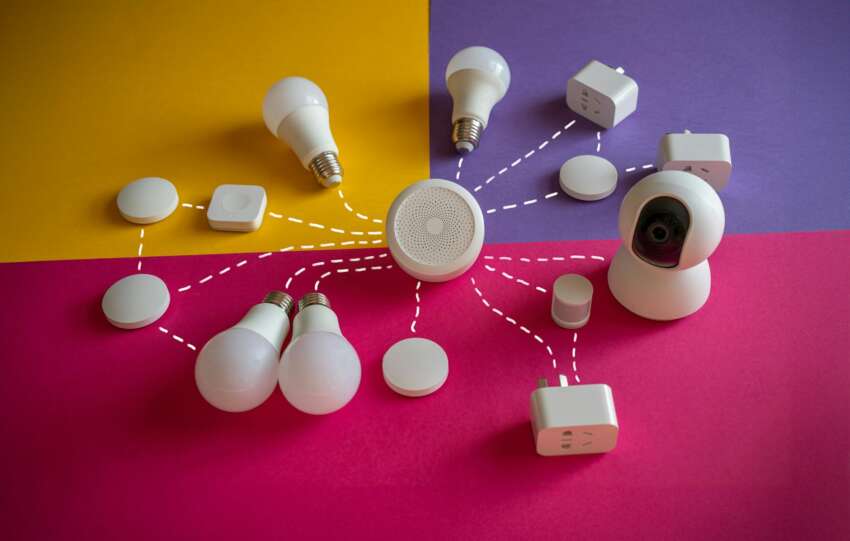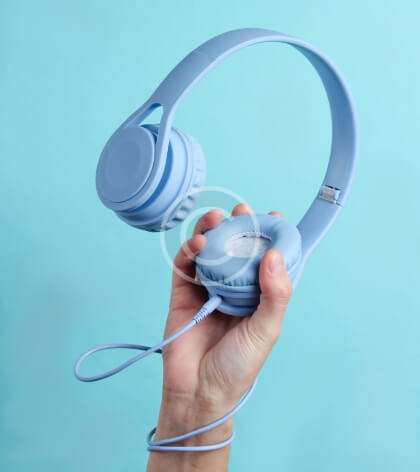Did you know that 1 in 3 people lose important data when switching to a new phone? When it’s time to set up my device from old phone, the stress of potentially losing photos, contacts, or messages can be overwhelming.
The excitement of unboxing your shiny new smartphone quickly fades when you realize you now face the daunting task of transferring years of digital life from your old device. However, with the right approach, you can transfer everything seamlessly without losing a single file.
Before you start randomly tapping transfer options, a systematic approach ensures nothing gets left behind. Whether you prefer using a cable for speed, wireless methods for convenience, or cloud backups for simplicity, this guide covers every method to transfer your digital life safely.
Ready to make your phone transition stress-free? Let’s walk through exactly how to move your data from old to new without losing anything important along the way.
Get Ready: What to Do Before You Start
Proper preparation prevents poor performance, especially when moving data between phones. Taking a few minutes to get everything ready will save hours of troubleshooting later. Follow these essential steps to ensure a smooth transfer process.
Charge both devices fully
The data transfer process can drain battery quickly, particularly with large amounts of information. Both your old and new devices should be at 100% battery or plugged in throughout the process. A transfer interrupted by a dead battery might result in corrupted or incomplete data. Additionally, many transfer tools won’t even start unless both devices have sufficient charge.
Connect to a stable Wi-Fi network
Transfers require a reliable internet connection, especially when moving larger files. Connect both devices to the same stable Wi-Fi network to ensure smooth data migration. Mobile data connections can be inconsistent and may incur extra charges depending on your plan. Furthermore, transfer times vary based on network conditions and the amount of data being moved. For optimal results, position both devices close to your router during the transfer process.
Back up your old phone to Google Drive or Google One
Creating a backup provides an extra safety net during the transfer process. To back up your Android device:
- Open your device’s Settings app
- Select Google Backup (for first-time users, follow on-screen instructions)
- To review settings, tap “Manage backup”
Remember that backups can take up to 24 hours to complete, so plan accordingly. Your backed-up data includes photos, videos, apps, app data, contacts, call history, messages, and device settings. Once set up, your phone will automatically back up when connected to Wi-Fi after being idle and charging for two hours.
Turn off RCS messaging if using Google Messages
Many Android users overlook this critical step. Rich Communication Services (RCS) must be disabled on your old device, or you might experience messaging issues on your new phone for up to 8 days. Google specifically recommends turning off RCS or “Chat” on your old phone before switching devices. To disable RCS:
- Open Google Messages
- Tap the 3-dot menu → Settings → RCS chats
- Toggle “Enable chat features” to the off position
If you forgot to turn off RCS on your old device, use Google’s web deactivation portal to resolve messaging issues on your new phone.
Check available storage on your new phone
Nothing halts a transfer faster than insufficient storage space. Check how much storage your current device uses by going to Settings → General → Device Storage. If your new phone has less storage capacity than your old one, you’ll need to prioritize what to transfer. Compare available space on both devices to determine if you can transfer everything or need to be selective. Many users face frustration when their new device lacks sufficient space for all their data.
By completing these preparation steps, you’ll set up your device from old phone without unexpected complications. This groundwork significantly increases your chances of a complete, error-free transfer.
Choose Your Transfer Method
Selecting the right transfer method is crucial for a successful migration of your digital life. Different approaches offer varying speeds, convenience levels, and compatibility with specific devices. Let’s explore your options to find the most suitable solution for your needs.
Use a USB cable for fastest transfer
Connecting your phones directly with a cable provides the quickest and most comprehensive data transfer experience. This method transfers virtually everything: contacts, photos, videos, messages, WhatsApp chats, apps, music, and more. For optimal results:
- Use the cable that came with your new device or ensure compatibility with both phones
- Connect both devices directly (some phones may require an OTG adapter)
- Follow on-screen instructions to select what data to copy
A wired connection primarily benefits those who don’t have excessive data on their old device, as you typically can’t charge phones during the transfer process. If you have years of photos or messages, consider alternative methods since devices cannot be plugged into chargers simultaneously during cable transfers.
Transfer wirelessly using Wi-Fi
For those without compatible cables or who prefer convenience over raw speed, wireless transfers offer an excellent alternative. To transfer data wirelessly:
Position both phones within 4 inches of each other while connected to the same Wi-Fi network. Both Android’s built-in transfer tool and third-party apps utilize this proximity to establish a direct connection between devices.
Wireless transfers allow you to keep both phones plugged into chargers throughout the process—a significant advantage when moving large amounts of data. Moreover, this method transfers essentially the same types of content as the cable option, including contacts, photos, videos, and calendar events.
Use Samsung Smart Switch for Galaxy devices
Samsung owners benefit from the dedicated Smart Switch application, which provides specialized features for Galaxy devices. This versatile tool offers three transfer methods:
- Via Wi-Fi: Place phones close together and follow on-screen prompts
- Using USB cable: Direct connection for fastest transfer
- Through PC/Mac: Create a backup on computer first, then restore to new device
Smart Switch transfers virtually everything between Galaxy devices, including secure folder contents. For non-Samsung Android phones or iPhones transferring to Galaxy, it still moves most essential data but may have some limitations depending on the source device.
Restore from Google One or Google Drive backup
Already backed up your old phone? Restoring from Google’s cloud services provides a straightforward alternative:
When setting up your new device, select “Restore from Google backup” during initial setup. Sign in with your Google Account credentials, and you’ll see available backups from previous devices. Select which elements to restore, and the system will automatically download your data.
This method works well for those who regularly back up to Google services. Nevertheless, restoration can take up to 24 hours to complete fully, depending on your internet connection and the volume of data being transferred.
Additionally, note that both devices must be on the same Android version (or your new device must be on a newer version) for complete restoration. If your new device runs an older Android version than your previous phone, you may experience an incomplete data transfer.
Each transfer method has distinct advantages—choose based on your specific needs, equipment availability, and the amount of data you’re moving.
Step-by-Step: How to Transfer Data
Now that you’ve prepared both devices and chosen your transfer method, it’s time to execute the actual data migration. The following straightforward steps will guide you through the entire process to set up your device from old phone without complications.
Turn on your new phone and select Start
The transfer journey begins as soon as you power on your new device. Upon startup, you’ll see a welcome screen with a “Start” button. Tap this to begin the setup process. If you don’t see the Start option, you might need to copy your data manually later. Immediately after this initial screen, connect to a Wi-Fi network when prompted – this connection is essential for the transfer process. On the Apps & Data screen, select the option to copy apps and data from your old device.
Connect both phones via cable or Wi-Fi
Depending on your chosen method, you’ll connect your devices in one of two ways:
For cable transfers (recommended):
- Follow the on-screen instructions to connect both devices using your cable
- If using an Android-to-Android transfer, your new device will detect the connection automatically
- For iPhone-to-Android transfers, you might need an OTG adapter with your Lightning to USB-C cable
For wireless transfers:
- When asked if you have a cable, tap “No cable? Ok”
- Select “A backup from an Android phone” or “Using an iPhone device?” as appropriate
- On your old Android device, open the Google app, search “set up my device,” and follow prompts
- Verify that the shapes and numbers match on both devices before proceeding
For Samsung Galaxy devices, the Smart Switch application offers similar connection options via Wi-Fi, cable, or computer.
Choose what data to copy
After establishing a connection, both devices will prompt you to select which data elements to transfer. Most devices allow you to choose from:
- Contacts and call history
- Photos and videos
- Text messages and chat history
- Apps and app data
- Calendar events
- Music and documents
For a more complete data transfer when using a cable, sign in to your Google Account when prompted. This ensures app data, purchase history, and settings transfer properly.
Wait for the transfer to complete
Once you’ve selected your data, tap “Copy” to begin the transfer process. Your new device will display “Copying your data…” while the transfer is in progress. When complete, your old device will show “Copying’s done.”
The transfer time varies significantly based on several factors:
- The amount of data being moved
- Your connection method (cable is faster than wireless)
- Network conditions if using Wi-Fi
- The age and processing power of both devices
A typical transfer might take anywhere from a few minutes to over an hour for devices with extensive data. Throughout this process, keep both devices:
- Close to each other (for wireless transfers)
- Connected to power when possible
- Undisturbed until completion
If the transfer gets interrupted due to disconnection or battery issues, you can typically restart the process. Should the setup get stuck for more than 15 minutes, tap “Stop copying” and try again with a different method.
What Gets Transferred and What Doesn’t
Understanding exactly what transfers between devices helps manage expectations when you set up your device from old phone. The process isn’t always as comprehensive as many users expect, with certain items requiring manual attention.
Data that transfers: apps, photos, contacts, messages
Most transfer methods successfully move your core digital content. Your contacts, call history, and text messages typically transfer seamlessly between devices. Photos and videos stored in your gallery will also move to your new phone, though the organization of albums might differ slightly.
Most installed applications transfer automatically, although they’ll need to download from the Play Store rather than copying directly. Calendar entries, notes, and reminders generally transfer without issues. Browser bookmarks and saved passwords usually transfer if you’re signed into Chrome.
Music files stored locally on your device will transfer through cable methods, though streaming service playlists require resyncing. Documents and downloaded files typically move over without problems during the transfer process.
Data that doesn’t: app logins, hidden files, some settings
Despite comprehensive transfer tools, certain data requires manual attention. App login credentials often need re-entering on your new device, even when the apps themselves transfer. This occurs because many apps store authentication tokens in secure areas that don’t transfer.
Hidden files, particularly those in secure folders, rarely transfer automatically. System settings like display preferences, notification configurations, and accessibility options might require manual adjustment on your new device.
Custom keyboard dictionaries containing your typing patterns and frequently used phrases typically don’t transfer. Home screen layouts, wallpapers, and widget placements generally require manual recreation. Additionally, phone-specific features like Samsung’s Secure Folder contents need separate backup procedures.
Special case: WhatsApp chats and backups
WhatsApp deserves special attention because of its unique backup system. WhatsApp backups on Android store separately from regular Google backups, requiring specific steps to preserve your chat history.
Before switching devices, manually create a WhatsApp backup by opening WhatsApp, going to Settings > Chats > Chat backup, and tapping “Back Up.” After setting up your new phone, install WhatsApp and verify your phone number. The app will automatically detect and prompt you to restore from the available backup.
Although mainstream transfer methods might claim to move WhatsApp data, many users report incomplete transfers. For absolute certainty, follow WhatsApp’s official backup and restore procedure to maintain your complete messaging history.
After the Transfer: Final Setup and Cleanup
Your data transfer is complete, but your setup isn’t quite finished yet. These final steps ensure your new device functions properly with all your important information intact.
Verify all important data is present
First, check that your texts, photos, videos, and contacts have transferred correctly. Open your messaging app, photo gallery, and contacts list to confirm everything appears as expected. For transferred apps, open each important one to verify functionality. Pay special attention to WhatsApp—after signing in with your phone number, it should automatically detect and prompt you to restore your chat history from available backups.
Sign in to your apps and accounts
Even after successful data transfer, most apps require manual sign-in on your new device for security reasons. Financial apps like Cash App have additional security measures that prevent automatic login on new devices. When encountering a “can’t login on this device” message, ensure you have:
- A stable internet connection
- The latest app version installed
- Access to the phone number linked to your account
Some apps may use verification codes or biometric authentication for added security on first login.
Wipe your old phone if you plan to sell or recycle it
Prior to selling or recycling your old device, completely erase your personal data:
- Back up any remaining important files
- Sign out of all accounts (especially iCloud, Google, and financial apps)
- For Android: Go to Settings → System → Reset options → Erase all data
- For iPhone: Navigate to Settings → General → Transfer or Reset → Erase All Content and Settings
This factory reset removes all personal information, preventing potential data theft or misuse.
Insert your SIM card and test calls/messages
Finally, activate cellular service on your new phone:
- Physical SIM: Insert your SIM card from your old device
- eSIM: Set up through Settings → Cellular → Set Up Cellular or Add eSIM
Afterward, make a test call and send a text message to confirm proper connectivity. If calls won’t connect, check that your contact numbers transferred correctly—some may have formatting issues with international codes (like +44 and 0 appearing together).
Subsequently, restart your phone to apply any new configurations and ensure proper network connection.
Conclusion
Switching Devices Doesn’t Have to Mean Losing Data
Transferring your digital life from one device to another certainly requires careful planning and execution. Throughout this guide, we’ve covered essential preparation steps, various transfer methods, and critical post-migration tasks that ensure a complete transition.
Remember that proper preparation significantly reduces the risk of data loss. Fully charged devices, stable Wi-Fi connections, and complete backups create a solid foundation for successful transfers. Choosing the right method—whether cable, wireless, manufacturer tools, or cloud restoration—depends primarily on your specific situation and the amount of data involved.
Most importantly, verify everything after completion. Check your photos, contacts, messages, and apps thoroughly before wiping your old device. Sign back into your essential apps, confirm your cellular connectivity works correctly, and rest assured your digital life continues seamlessly on your new phone.
Data transfer might seem daunting at first, but following these systematic steps makes the process remarkably straightforward. Your precious memories, important contacts, and essential information deserve careful handling during device transitions. After all, a smooth setup experience allows you to enjoy your new device without the frustration of missing files or lost information.
The next time you upgrade your phone, you’ll approach the process with confidence, knowing exactly how to transfer everything that matters. Consequently, you’ll never need to worry about losing a single important file again.





